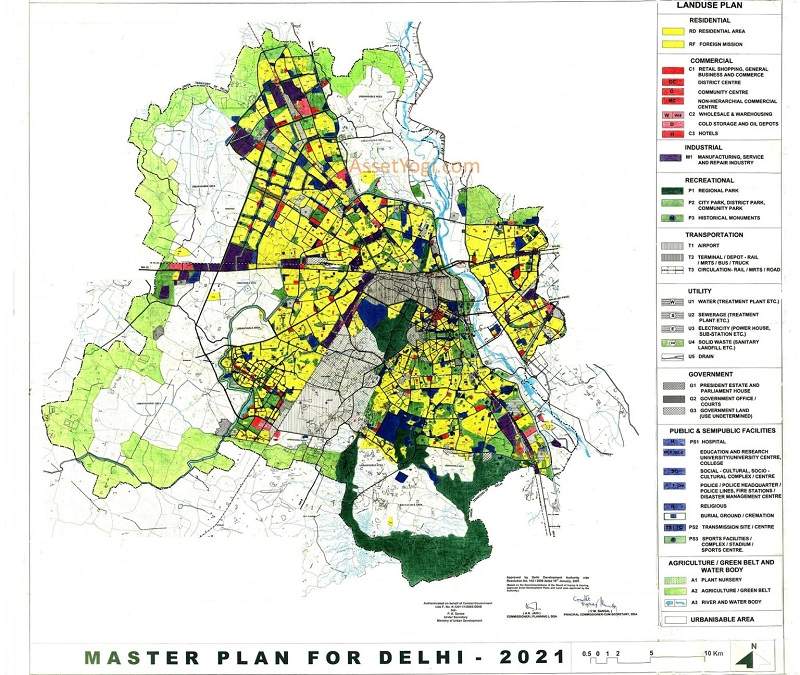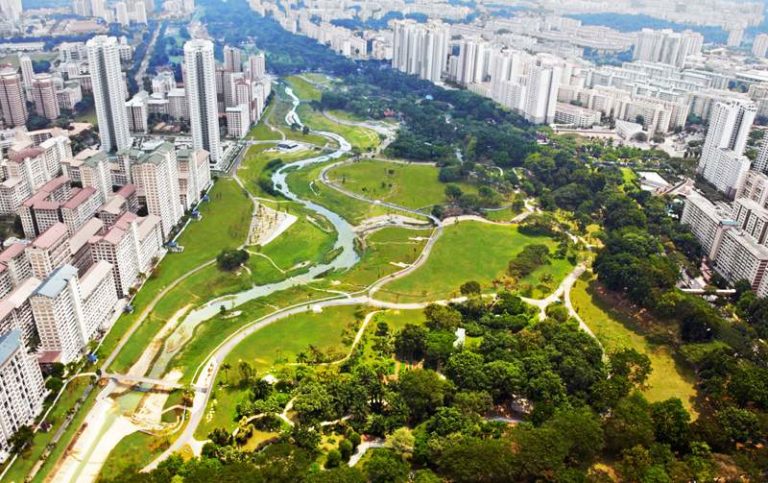Introduction
The Land Use Sealing Drive in Delhi Municipal Area first started in 2006 and from then on has been off and on in enforcement till date. The focus of the drive is to both control and regulate the unauthorized use of land in the national capital. Unauthorized land-use here means any development which violates the norms and regulations of the local Municipal bodies or the Delhi Development Authority which are the two statutory authority/body involved in categorization of land uses, its regulation and control. The following conditions are majorly termed as un-authorized land-use
1. Where the development is not sanctioned by the appropriate authority
2. Where construction is not as per the sanctioned layout
3. Where the commercial activity carried out in the sanctioned premises is either not prescribed or covers more area than permitted.
The drive is carried out by a Monitoring Committee appointed by the Supreme Court. The major targets of the drive are the business establishments that are carrying out commercial activities where residential land use is permitted.
Statutory Authority in Delhi for Land Use Regulation
There are two major statutory authority/body that sanctions, plans, regulates and controls the land-use in the Delhi municipal area. These are the Delhi Development Authority (DDA)and the Municipal Corporation of Delhi (MCD).
Delhi Development Authority
Established in 1957, the main function of the DDA under Sections 7-11A of the DDA Act is Planned development of Delhi. The DDA prepares policies, guidelines, plans and proposals for Delhi’s planned development with the aid of Masters Plan, Zonal Plans, Action Area Plans and such. The authority also sanctions the building plans for the areas which lies under its jurisdiction.
Municipal Corporation of Delhi
The section 332 of the Delhi Municipal Act, 1957 (which constituted the MCD) establishes that no person shall erect or commence any construction which is not in accordance with the provisions of the Delhi Municipal Act and the bye-laws stated in the Act. The MCD is authorized to sanction construction for any area other than the development area provided it is in accordance with the Building by-laws, Master Plan, MCD Act and the DDA Act.
The Delhi Master Plan, 2021
The Delhi Development Authority states-” A Master Plan is the long-term perspective plan for guiding the sustainable planned development of the city. This document lays down the planning guidelines, policies, development code and space requirements for various socio-economic activities supporting the city population during the plan period. It is also the basis for all infrastructure requirements. “According to the Master Plan for Delhi-2021(MPD), The National Capital Territory of Delhi (NCT) has been divided into15 zones-Zone A to H and Zone J to P (zones K and P, are subdivided into two-part zones). Out of the 15 zones, eight (zone A to H) are in urban area, six (zone J to P) in the rural area while one (zone O) in riverbed (along the Yamuna river).As per the MPD 2021, land use is divided into 10categories (Residential, Commercial, Industrial, Public/Semi-Public, Recreational, Ridge/Regional Park, Transportation, Utility, Government, Waterbody/Green Belt)which are further sub-divided into different use zones. Each land use category is assigned number of use zones which is further subdivided into required number of Use Premises with or without conditions in Layout Plans. A use zone in the Land Use Plan could be indicated as consisting of more than one use zones: in such a case the use premises/ use activities permitted in both the use zone shall be applicable. The residential and industrial land uses need to have integrated plans which shall be governed by building control regulations. In order to address the growing demand of commercial activities and shortage of available commercial space simultaneously, the MPD has adopted the Mixed Use in residential areas. If a development consists of more than one use zone, the activities permitted in both zones shall be applicable and such land uses shall be termed as mixed use. The need to achieve better synergy between work, home and transport is also met by allowing small shops of daily needs on ground floors in the residential areas. GNCTD has also notified 2183 streets vide notification dated 15thSeptember, 2006 for local commercial and mixed-use activities. This majorly incorporates the non-residential use activity within a residential premise. Following figure shows the land-use plan as incorporated in the Master Plan, 2021.
The Sealing Drive in Delhi
The Land Use violation in the Delhi Municipal Corporation Area is not new. As early as in 1985, environmentalist M C Mehta had highlighted the misuse of residential premises for commercial purposes and also the establishments of industries in non-conforming zones. In the year 2006, the Supreme Court of India observed the flagrant violation of norms pertaining to land-use and directed the Municipal Corporation to issue public notices and widely publicize through print media that any violations in land use shall either be checked or the process of sealing will start 30 days after the publication of the notice. Unfortunately, no heed was paid by violators and officials towards the notice and the apex court directed land sealing of offending premises and a Monitoring Committee was entrusted to oversee the entire procedure of sealing any premise violating the norms of the DDA, MCD, building bye-laws or the Delhi Master Plan. This order targeted any development in any area which had either been commenced in contravention of the Delhi Master Plan or which were constructed without the approval, permission or Sanction of the DDA or the MCD. This triggered immense outrage and violators protested violently leading to seizure of sealing activities. In purview of the prevailing circumstances in the capital, a bill (Delhi Special Provisions Bill) was sanctioned by the Central government concerning regularization of commercial establishments which was passed by President Kalam leading to de-sealing of the misused areas. Thereafter, the Delhi Residents Welfare Association and Citizens Forum (an NGO) jointly filed a petition alleging the law to be politically motivated and illegal. The Court termed the new law as invalid stating that it was putting a moratorium on the sealing and demolitions in the national capital. In order to avoid confrontation with judiciary and protestors, the Delhi Development Authority made amendments in the Delhi Master Plan 2001. This permitted non-hazardous and non-polluting commercial activity in 350 urban villages of Delhi and desealing of government recognized pre-primary schools among other relaxations. The controversy came in news again in December 2017 when the Supreme Court revived the powers of the Monitoring Committee to take proper action against any residential area where non-residential land-use is sited. Any aggrieved can approach the Monitoring Committee and deposit the required fine along with declaration to stop the non-permitted land-use for the de-sealing of the violated area. A special Task Force was created in 2018 consisting of 13 members headed by the DDA-Vice Chairman to identify encroachments of government land and take effective measures to reclaim it. According to the Indian Express, 10533 commercial units were sealed by January, 2019 which covers the areas of Meharch and Market, Khan Market, Defence Colony, Karol Bagh, Hauz Khas, Vasant Kunj and Chhatarpur. The actions of STF has also been questioned as they seal property in order to make money and harass poor traders of Delhi. The Traders Association have been pleading to the Central Government to bring ordinance to stop the ongoing sealing drive but to no effect. The drive has also assumed political undertones in Delhi with the 2019 Lok Sabha Elections and the upcoming 2020assembly polls. There are various layers to the Delhi sealing drive ranging from the enforcement of the norms, rules, regulations of the DDA, MCD and others to the amendments made in the Master Plan to aid the enforcements, benefit the public and to prevent violent outra.
Amendments in the Delhi Master Plan, 2021
The land use planning is an attempt to plan land uses such that the requirements of one does not interfere with the other. As for example, commercial establishments usually operate until late at night and if permitted in residential zones will tend to disturb the tranquility and pollution levels of the environment. Since, the sealing activities caused major uproar and outrage, the DDA came up with some amendments in the Master Plan, 2021in order to provide relief to the traders and local shopkeepers of the city. Major amendments in the MPD,2021 areas follows-
1. No area falling under residential land use shall allow for opening of liquor shops, pubs, discotheques and clubs on any floor of buildings in the city. The main concern of most resident welfare associations is to prevent unnecessary breach of neighborhood premises by non-residents and unauthorized persons. These commercial establishments cause huge stress on the existing infrastructure including physical, social and civic infrastructure and hence have been barred.
2. Another important proposed amendment is bringing a uniform floor-area ratio (FAR) for shop-cum-residence plots and complexes at par with residential plots. The commercial use of upper storey is allowed after paying the applicable conversion charges. This ensures that commercial structures are also allowed construction upto four storeys. This would lead to unnecessary burden on the decade old infrastructure planning of the entire area leading to pressure on water supply, drainage, parking and other utility services since these plots were initially designed to support residential developments. Hence, before the implementation, the infrastructure augmentation is to be implemented. DDA has approved that the conversion charges levied in these structures shall be utilized to exclusively enhance the infrastructure facility and utility requirements of the residential land use area.
3. Post amendments, activities which are non-polluting, non-hazardous and not prohibited by law shall be permitted in residential areas.
4. It is also proposed that there are some residential facilities which were designed five decades ago to service 200 people per hectare will now have to service around 2000 people per hectare. If the proposed amendments are enforced, here too the infrastructure plans need to be augmented for the population growth. Redesigning of layout plans of the colonies after providing for additional load of power, water, parking, roads etc. will be needed which requires money. As per the DDA’s proposals, the amount collected as various charges, will be deposited in a designated escrow account to be invested for improving infrastructure for that particular colony.
Conclusion
The Supreme Court of India in April 2018 asked the DDA if they had any plans to regulate the unauthorized constructions and violations in the Delhi Municipal Area, to which Master Plan 2021 and the proposed amendments was the authority’s answer. To this, the bench of judges pointed out that Delhi Master Plan was merely a ploy to legalize such constructions. The amendments in the Master Plan, 2021 are nothing but an unfortunate attempt to satisfy the traders union and turn a deaf ear towards the lack of far-sightedness on the part of the DDA apart from the inability of authorities to enforce the laws and regulations as per the Master Plan. Also these amendments would protect illegalities from punishments and hence promote Dadagiri was the opinion of the apex court of law which has stayed any further amendments in the MPD 2021.The court also suggested that these amendments especially the ones pertaining to the FAR will result in large constructions coming up in Delhi which will lead to new problems. Now it is for the future to see whether the targeted change in residential land use and the pressure it shall create on the infrastructure there of can be addressed as per the DDA’s proposals after the amendments are allowed by the Supreme Court of India







